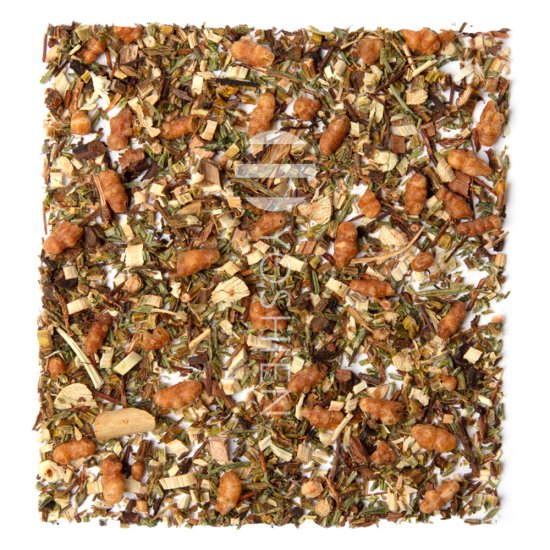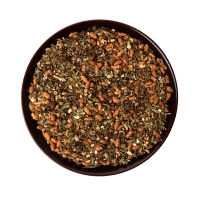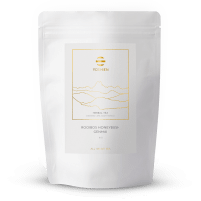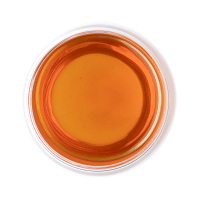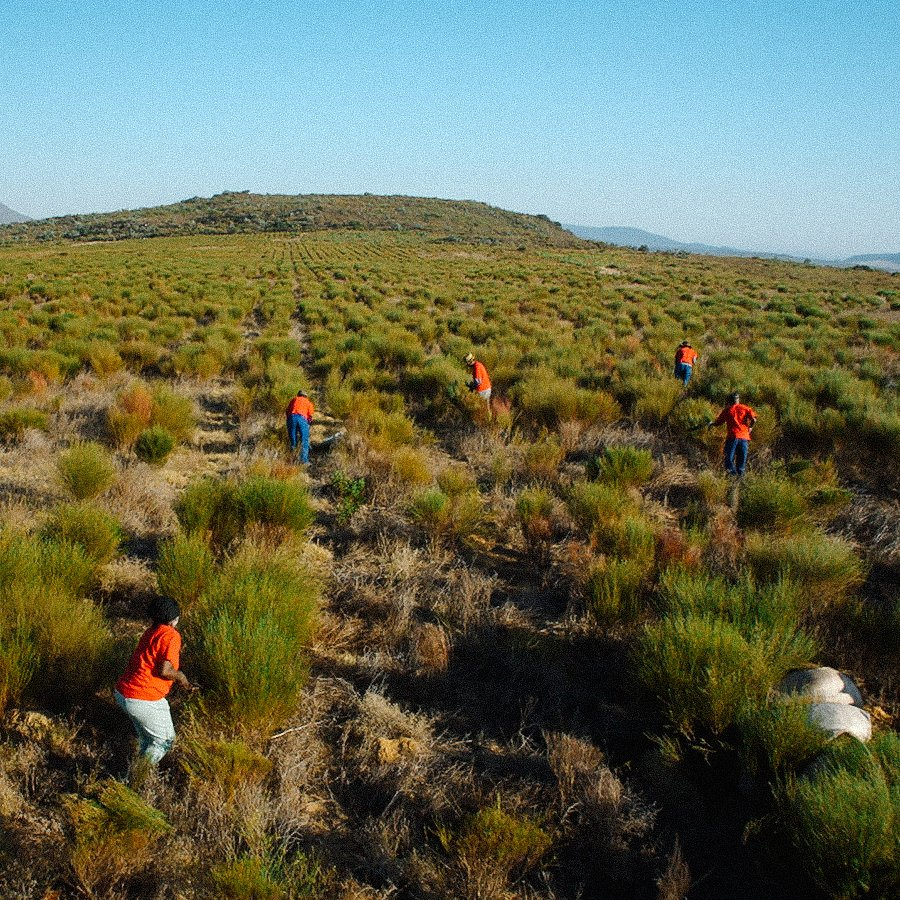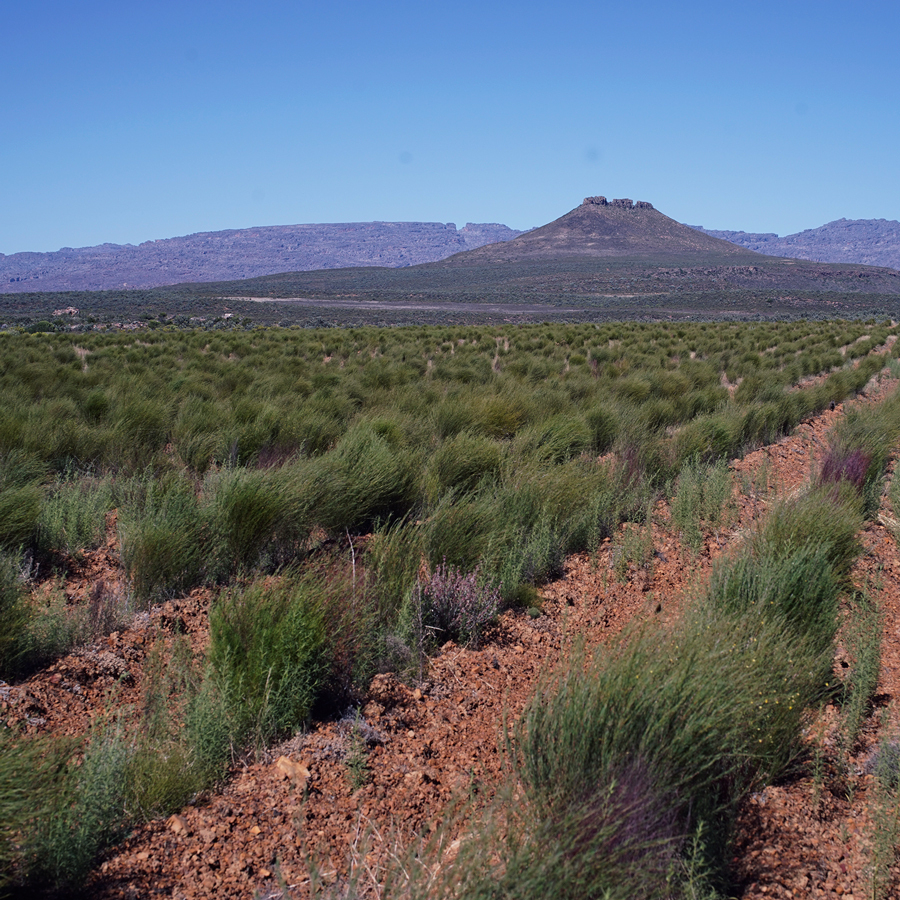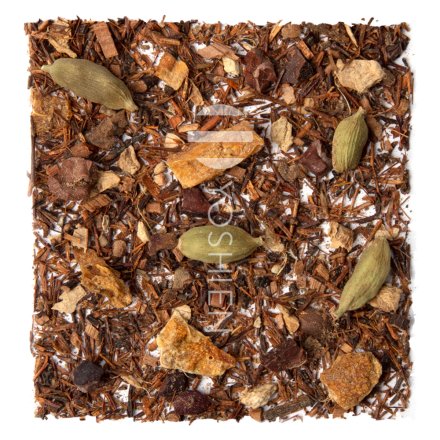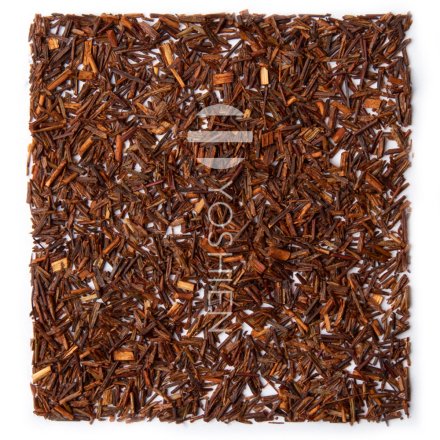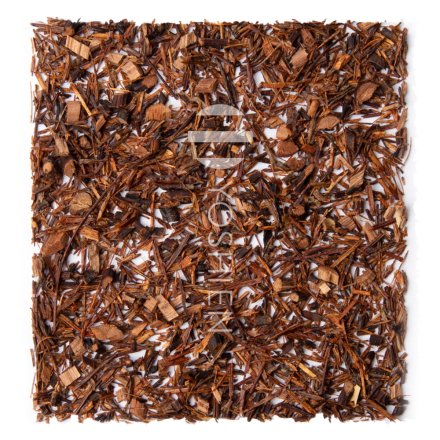Rooibos
In order to ensure a uniform and healthy growth, the rooibos bushes are planted in small seedbeds. This is done in the South African late summer, from February to March. The seeds are mechanically processed to enable a high germination rate.
The following fall, the seedlings are harvested by hand and planted in fields on the Cederbergs. This is followed by an 18-month growth phase, after which the first harvest takes place. The bushes are manually cut about 40cm above the ground to allow the plant to continue growing for up to 4 more harvests.
Following harvest, the plants are mechanically crushed and rolled, then soaked with water in order to initiate fermentation. During this process, the tea not only gains its familiar reddish-brown colour, but the sweet aroma compounds and numerous flavonoids are also formed. The fermented rooibos is then sun-dried to stop the fermentation, then sorted and finally steamed and dried.
Honeybush
This tea farm is located on the southern tip of Africa in Cape Agulhas. The farmer began cultivating honeybush in 1994, and quickly realised that the variety C. genistoides was best suited to local conditions, which is why the farm specialises in this particular strain. In 2008, the farm acquired in-house processing and drying facilities. The farm does not use any herbicides, pesticides, or fertilisers, and only pure spring water is used for the fermentation of tea. The honeybush plants are harvested by hand with sickles, which not only improves the quality of the tea, but also does not damage the plants. Special attention is given to the careful weeding of the tea fields during harvest so that no pyrrolizidine alkaloids (PAs, found in other plants) contaminate the honeybush.
The sweet honeybush (heuningbos), like the rooibos, is endemic to the fynbos belt of shrubland in the Western and Eastern Capes of South Africa. When flowering, the honeybush stands out amongst all the other vegetation in the South African countryside thanks to its bright yellow, honey-scented blossoms.
Unfermented honeybush tea is processed in much the same way as green honeybush tea; after harvesting, the green rooibos is taken to the processing plant as quickly as possible in order to prevent any oxidation or fermentation. This is gently prevented by a blower system which functions at 99-115°C (depending on the outside temperature). This allows for the preservation of the special antioxidants. Finally, the honeybush is pasteurised with steam.
Although honeybush previously was harvested from the wild, since the 1990s the plant has been increasingly cultivated for tea on farms.
Single Origin
This tea is 100% from Cape Agulhas. Sourced directly from the tea farmer.
Organic Certification





